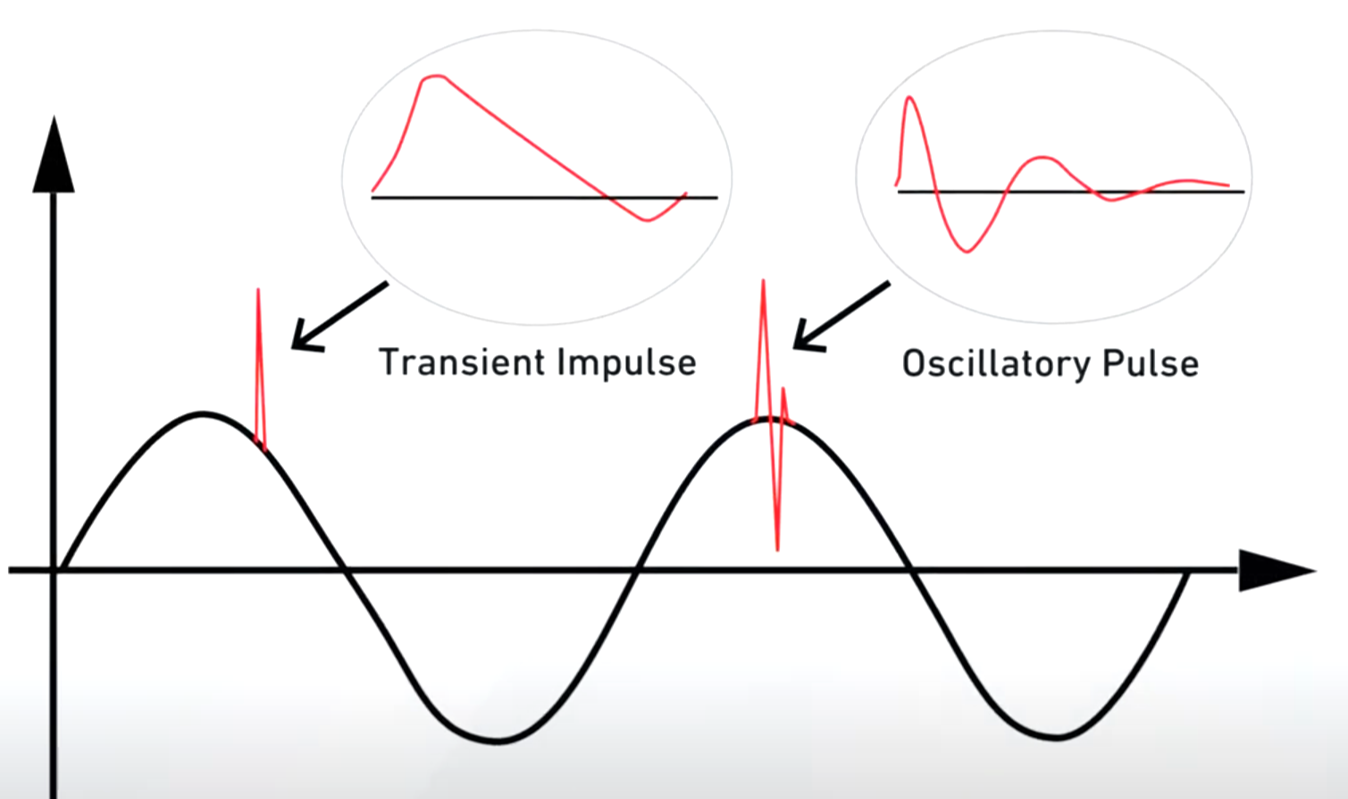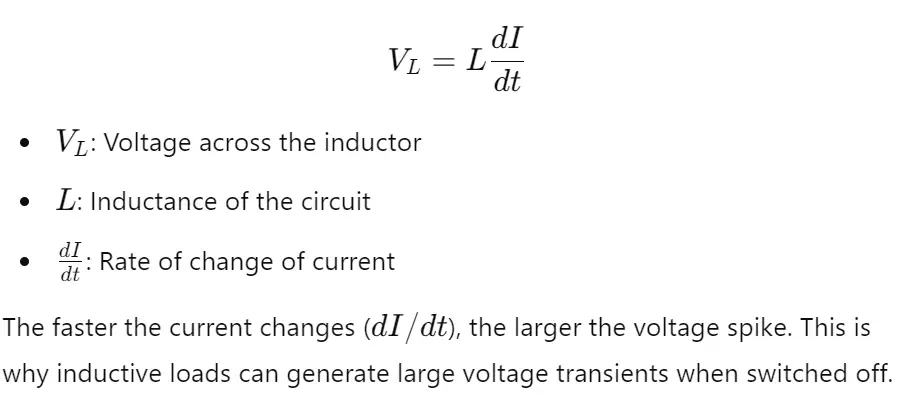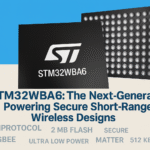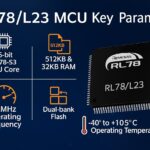In electrical systems, transients refer to temporary, short-duration deviations from the steady-state behaviour of a system. These are caused by sudden changes in the system’s conditions, such as the application or removal of loads, switching operations, faults, or other external interference such as lightning strikes.
During transients, electrical quantities (like voltage and current) can spike abruptly beyond normal operating levels, posing risks to equipment and components. Unlike steady-state conditions, where voltages and currents stabilize, transients exhibit rapid fluctuations before settling into a steady state.

Characteristics of Transients
Short Duration: Transients are typically brief and do not last for a prolonged period. Their period can range from microseconds to a few milliseconds, depending on the type of system and disturbance.
Non-Steady-State: During a transient, the system is not in a steady state, and the variables (e.g., voltage, current) fluctuate rapidly before settling to a new steady state.
High Magnitude: Transients often involve large, sudden changes in voltage or current, which can be much higher than the system’s normal operating conditions.
Exponential Decay: In many cases, the effects of transients decay exponentially, meaning the disturbance decreases rapidly over time until the system stabilizes.
Sources of Transients in Electrical Systems
Internal Sources of Transients
Switching events, such as turning devices on or off, cause abrupt changes in current or voltage, leading to transients in electrical systems. This is particularly common in circuits with inductive or capacitive elements.
When an inductive load (e.g., motor, transformer, Relays) is suddenly disconnected from the circuit, the energy stored in the magnetic field of the inductor has to dissipate. This can cause a voltage spike or voltage transient as the inductor resists the sudden change in current.
The induced voltage across the inductor is given by Faraday’s Law of Induction:

When a capacitor bank is switched into the circuit, the sudden rise in voltage across the capacitor can generate transient oscillations.When a capacitor is suddenly connected or disconnected, it can cause a transient current or voltage due to the charge redistribution.
High rates of voltage change can create significant current transients during switching.
Power electronic devices, like transistors and thyristors, operate by switching on and off very rapidly. This high-speed switching introduces transients because of the fast changes in current and voltage. These transients can affect nearby circuits and components.
Mechanical relays, when switching on or off, introduce transients due to the inductive loads they control. When the current through an inductive load is interrupted suddenly, it causes a high voltage spike (back EMF).
In industrial systems, relay contacts switching inductive loads like motors can produce large voltage spikes, leading to equipment damage if not properly mitigated.
Sudden changes in load, such as turning large motors or machines on or off, can create transient voltage and current surges. This is because the system experiences a sudden imbalance in power demand, leading to disturbances.
Arcing occurs when electrical contacts in switches, circuit breakers, or connectors are worn out or faulty, leading to brief, high-voltage transients. Arcing introduces a highly resistive, unstable connection, which causes transient fluctuations in current and voltage.
External Sources of Transients
Lightning strikes, even when they do not directly hit electrical equipment, can induce large voltage surges in power lines through the electromagnetic fields generated by the strike. These surges are a significant source of transients and can be destructive.
Switching operations in power utilities, such as capacitor bank switching or tap-changing transformers, can introduce transients into the system. These operations involve connecting or disconnecting large capacitive or inductive elements, leading to temporary disturbances.
Poor or intermittent connections in overhead power lines, connectors, or joints can lead to arcing or sudden changes in impedance, causing transients. The transient nature of such disturbances arises from the unstable nature of the connection.
Types of Transients in Electrical Circuits
Transients can be broadly categorized into two types based on their behaviour:
1. Impulsive Transients
Impulsive transients are sudden, non-power frequency disturbances that are usually unidirectional or unipolar in nature. Impulse transient has the majority of the energy either in one direction or in polarity. Key characteristics include rise time (the time taken for the transient to reach its peak), decay time, and spectral content.

Impulsive transients refer to voltage or current deviations that occur only in one direction, either positive or negative, but not both.
When lightning strikes a power line, it produces an impulsive or unipolar transient in the form of a high-magnitude voltage surge that is typically positive. This surge travels through the power system, causing a sharp increase in voltage in a single direction, usually upwards.
When large inductive loads (like motors) are switched off, the sudden release of stored energy in the inductance can create a unipolar voltage spike in the negative direction, often referred to as voltage spikes or inductive kickbacks.
2. Oscillatory Transients
Oscillatory transients are bipolar disturbances and having the ringing component where the polarity alternates between positive and negative as the value decay. These transients are typically observed after switching events and are defined by their magnitude, duration, and frequency spectrum.

Oscillatory transients refer to voltage or current deviations that oscillate between positive and negative directions, often crossing the zero baseline. These transients involve alternating excursions above and below the steady-state value.
When switching operations are performed in systems with capacitive or inductive elements (such as transformers or capacitors), the system may experience oscillatory transients.
For example, when a capacitor bank is switched on or off, the voltage can oscillate above and below the nominal value for a brief period. These oscillations decay over time as the system returns to equilibrium.
In an electrical system with a combination of inductance and capacitance, a disturbance can cause oscillations due to resonance. These oscillations swing between positive and negative values of voltage or current before they dampen out
Frequency-Based Classification of Transients
Transients can also be classified based on their frequency content

Effects of Transients in Electrical Circuits
The impact of transients on electrical systems can be severe, affecting everything from power distribution to sensitive electronic equipment. The effects are often classified as follows:
1. Intermittent Interruptions
Transient events can cause brief interruptions in control and data systems, leading to data loss or corruption.
2. Chronic Degradation
Repeated exposure to transients gradually degrades circuit components, shortening their lifespan and reducing performance.
3. Latent Failures
Continuous exposure to transient stress can cause components to fail prematurely, even if no immediate symptoms are visible.
4. Catastrophic Failures
In severe cases, transients can cause instant and irreversible damage to components, especially if they exceed the voltage or current ratings.
Mitigating Transient in Electric Circuits
Mitigating transients in electrical systems is crucial to prevent damage to sensitive equipment and maintain system reliability. Transients, which are sudden and short-lived deviations in voltage or current, can be managed effectively through various protective devices and thoughtful system design. Below are some common methods for mitigating transients, along with explanations of how they work.
Surge Protectors
Surge protectors are devices designed to prevent excessive voltage surges from reaching and damaging electronic equipment. They work by diverting the excess voltage to the ground when a transient (like a voltage spike) occurs.
Surge protectors are typically used in power distribution systems to safeguard connected devices from surges caused by events like lightning strikes, switching transients, or power grid disturbances.
Surge protectors contain components like Metal Oxide Varistors (MOVs) that act as voltage clamping devices. Under normal operating conditions, the MOV has high resistance, but when the voltage exceeds a certain threshold, the MOV’s resistance drops, allowing the excess voltage to be diverted away from sensitive devices and into the ground.
This process clamps the voltage to a safe level, effectively protecting the connected equipment from damage.
Transient Voltage Suppressors (TVS Diodes)
TVS diodes are semiconductor devices designed to protect sensitive electronic circuits by absorbing and dissipating transient energy. TVS diodes act very quickly, within picoseconds to nanoseconds, and are used in circuits with components that are especially vulnerable to voltage spikes, such as microcontrollers, sensors, and communication interfaces.
Under normal operating conditions, TVS diodes act as open circuits. However, when a transient voltage spike exceeds the diode’s breakdown voltage, the diode rapidly switches to a low-resistance state, allowing the excess energy to be safely absorbed and dissipated.
TVS diodes are designed for unipolar or bipolar operation, depending on whether they protect against positive-only or positive and negative voltage transients.
Proper Grounding
Proper grounding is essential in mitigating transients by providing a low-resistance path for excess energy to safely dissipate. Grounding ensures that transients (such as those caused by lightning or switching surges) do not raise the voltage level of the equipment to dangerous levels. Grounding is crucial both in power systems and in sensitive electronic devices.
Grounding provides a direct path for excess voltage and current to flow safely into the earth, preventing transients from building up within the system. In cases like a lightning strike or a switching event, the energy is directed to the ground, away from sensitive components.
Proper grounding also helps reduce ground loops, which can introduce noise and other undesirable effects in electronic systems.
Summary
A transient is a short-duration, high-frequency disturbance in an electrical circuit, characterized by sudden deviations in voltage or current. These disturbances, often caused by events like capacitor switching, load changes, lightning strikes, or arcing, can negatively affect equipment and system performance.
Transients are typically classified as either unipolar (deviating in one direction) or bipolar (oscillating between positive and negative).
Managing transients is essential to prevent damage, and common mitigation techniques include using surge protectors, transient voltage suppressors (TVS diodes), and ensuring proper grounding.
For optimal protection, systems often employ multiple stages of suppression, with devices installed at various points to handle transients of varying magnitudes.
Author Profile
- 20+ years embedded hardware design professional with a burning passion for teaching. Sharing the intricate world of embedded hardware is my mission and joy.
Latest entries
 Tech Updates30 November 2025STM32WBA6: The Next-Generation MCU Powering Secure Short-Range Wireless Designs
Tech Updates30 November 2025STM32WBA6: The Next-Generation MCU Powering Secure Short-Range Wireless Designs Blogs24 November 2025High-Speed PCB Layout Design Guide-104
Blogs24 November 2025High-Speed PCB Layout Design Guide-104 Tech Updates14 September 2025Renesas Launches RL78/L23 Ultra-Low-Power MCUs to Power Smarter Home Appliances
Tech Updates14 September 2025Renesas Launches RL78/L23 Ultra-Low-Power MCUs to Power Smarter Home Appliances Blogs7 September 2025High-Speed PCB Layout Design Guide-103
Blogs7 September 2025High-Speed PCB Layout Design Guide-103












